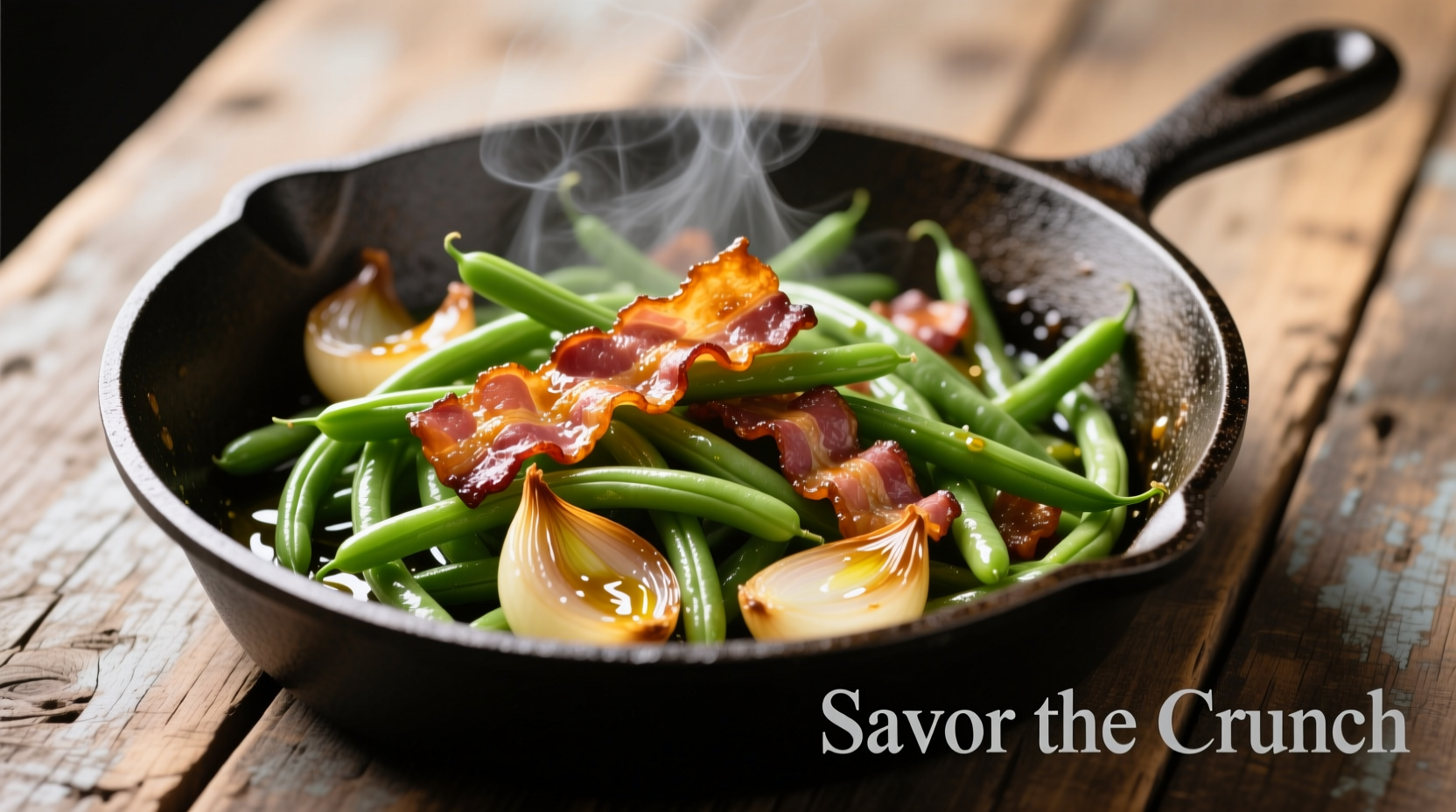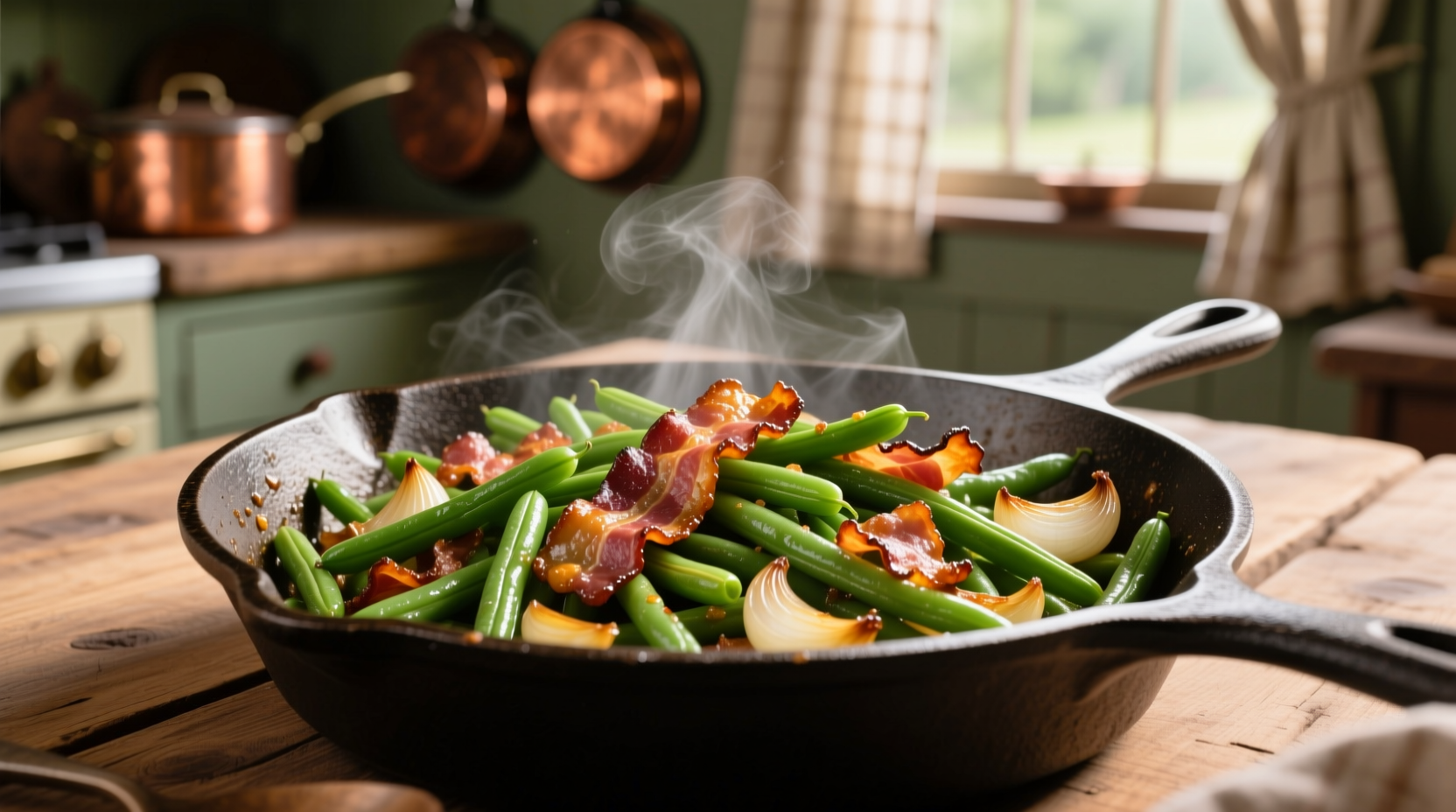There's a reason green beans with bacon and onion remains a beloved side dish across American kitchens for generations. When executed properly, this simple combination creates a harmony of textures and flavors that transforms humble ingredients into something extraordinary. The secret lies not just in the ingredients themselves, but in the precise cooking techniques that prevent soggy beans and achieve that perfect balance between smoky bacon, sweet onions, and vibrant green beans.
Why This Recipe Works Every Time
Unlike many versions that result in either mushy vegetables or undercooked bacon, this method uses a two-stage cooking process that ensures each component reaches its peak. The bacon renders slowly to develop complex flavors without burning, while the green beans maintain their vibrant color and crisp-tender texture through precise timing.
Essential Ingredients and Smart Substitutions
The quality of your ingredients directly impacts the final dish. Here's what you need to know before you start cooking:
| Ingredient | Best Choice | Why It Matters |
|---|---|---|
| Green beans | Fresh, firm pods with vibrant color | Older beans become stringy and lose flavor rapidly |
| Bacon | Thick-cut, smoked variety | Thin bacon burns before rendering properly; unsmoked lacks depth |
| Onion | Yellow or sweet varieties | Yellow onions caramelize beautifully; sweet varieties add natural sugar |
According to the USDA Food Safety and Inspection Service, bacon should reach an internal temperature of 145°F (63°C) with a 3-minute rest time for safe consumption. This temperature ensures proper rendering while maintaining texture.
Step-by-Step Cooking Process
Follow this sequence for restaurant-quality results at home. Total preparation and cooking time: 25 minutes.
Prep Phase (5 minutes)
- Wash and trim 1 pound fresh green beans, removing stem ends
- Cut 6 ounces thick-cut bacon into 1/2-inch pieces
- Peel and thinly slice 1 medium yellow onion
- Measure 2 tablespoons chicken or vegetable broth for deglazing
Cooking Sequence (20 minutes)
- Render the bacon: Cook bacon in a cold skillet over medium-low heat for 8-10 minutes until crisp but not burnt. Remove with slotted spoon, leaving 1-2 tablespoons fat.
- Caramelize onions: Add onions to bacon fat, cooking 6-8 minutes until golden brown and softened.
- Blanch green beans: While onions cook, bring 2 quarts salted water to boil. Add beans for exactly 2 minutes, then transfer to ice water.
- Finish the dish: Return beans to skillet with onions, add broth, and cook 3-4 minutes until beans are crisp-tender and liquid evaporates.
- Combine and serve: Stir in bacon, season with salt and freshly ground pepper to taste.
The Maillard reaction, which occurs between 280-330°F (135-165°C), creates the complex flavor compounds that make properly caramelized onions so delicious. This scientific process, documented by the Culinary Institute of America, explains why slow cooking yields superior results compared to high-heat methods.
Pro Tips for Perfect Green Beans Every Time
Avoid these common pitfalls that ruin otherwise promising dishes:
- Don't overcrowd the pan: Cook beans in batches if necessary to maintain high heat for proper searing
- Control moisture: Pat blanched beans dry before returning to skillet to prevent steaming
- Timing is critical: Overcooking by even 60 seconds turns crisp-tender beans to mush
- Season at the end: Salt draws out moisture; add after beans are nearly done

Healthy Adaptations and Dietary Considerations
This classic dish can accommodate various dietary needs without sacrificing flavor:
- Lower sodium option: Use turkey bacon and reduce added salt by 50%
- Vegan version: Substitute coconut bacon and use olive oil instead of bacon fat
- Gluten-free: Naturally gluten-free; verify broth ingredients
- Nutrition facts per serving: According to USDA FoodData Central, one serving (1/4 of recipe) contains approximately 180 calories, 12g fat, 10g carbohydrates, and 8g protein
Serving Suggestions and Pairings
This versatile side complements numerous main courses:
- Ideal with roasted chicken or grilled steak for balanced meals
- Add protein with toasted almonds or pecans for vegetarian mains
- Pair with creamy mashed potatoes and roasted garlic for holiday dinners
- Complement rich dishes like beef Wellington or duck breast
Storage and Reheating Guidelines
Proper storage maintains quality for future meals:
- Refrigeration: Store in airtight container for up to 3 days
- Freezing: Not recommended as beans become mushy when thawed
- Reheating: Warm in skillet over medium heat with 1 tsp water to revive texture
- Reviving leftovers: Add fresh bacon bits before serving to restore crispness











 浙公网安备
33010002000092号
浙公网安备
33010002000092号 浙B2-20120091-4
浙B2-20120091-4